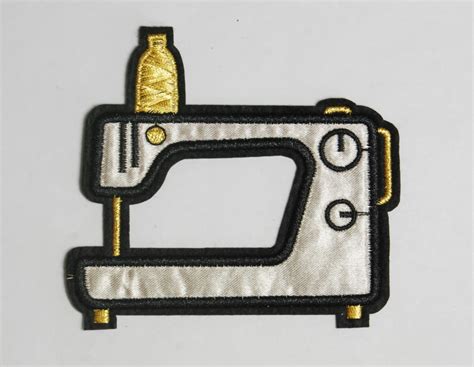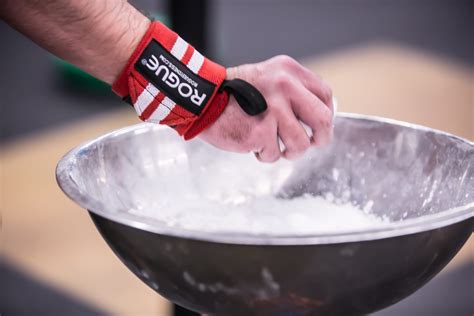Assessing the Damage

Jeans are arguably the most versatile piece of clothing in anyone’s wardrobe. They can be dressed up or down, worn to most occasions, and make any outfit look good. However, as much as we love them, jeans are not always as durable as we’d like them to be. One of the most common issues with jeans is when they rip between the thighs. Not only is this embarrassing, but it’s also uncomfortable to wear. Unfortunately, it’s a problem that even the most expensive and high-quality jeans are not immune to. But before you throw out that favorite pair of jeans, consider fixing them with a few easy tips.
The first step in fixing ripped jeans is assessing the damage. Not all rips can be fixed, and it’s essential to evaluate the extent of the rip before proceeding with any repairs. Depending on the severity of the rip, there are different methods of fixing it. For instance, a small tear or hole can be quickly repaired by sewing it up or patching it up with a denim patching kit. But if the rip is significant and extends to the seam, it might require a bit more work.
One common type of rip that occurs in jeans is a crotch blowout. A crotch blowout is when the material between the thighs wears out, frays, and ultimately tears apart. It’s usually the result of friction, rubbing, or tension between the thighs when walking or sitting. A crotch blowout can happen to anyone, regardless of their weight or size. Here’s how to assess a crotch blowout:
Step 1: Examine the rip by turning the jeans inside out. Inspect the rip to determine whether it extends beyond the seams and how big it is.
Step 2: Check the surrounding fabric for signs of wear and tear. Thoroughly check the material around the rip. If the fabric is weak, fraying, or worn out, it may be hard to repair the jeans entirely.
Step 3: Decide if the jeans are worth repairing. After assessing the damage, determine if it’s worth repairing the jeans or if it’s time to let them go. If the rip is too extensive or the jeans are already too worn out, it’s better to invest in a new pair of jeans. However, if the damage is minimal and the jeans are still in good condition otherwise, go ahead and repair them.
Assessing the damage is the first step towards fixing ripped jeans. With a careful examination, you can determine if the jeans are fixable, saving you money and time in the long run. Don’t worry too much if your favorite pair of jeans has a rip between the thighs. With a bit of work and some careful attention, you can fix them up and have them looking as good as new again.
Tools and Materials Needed

Jeans are one of the most popular and versatile clothing items, and we all have our favorite pair that we wear every chance we get. However, denim is prone to wear and tear, especially in the thigh area where friction occurs. If your jeans have ripped between the thighs, don’t fret. You can fix them yourself with a few basic tools and materials.
Here are the tools and materials you will need to fix ripped jeans:
1. Sewing Kit
A sewing kit is one of the most important tools you will need to fix ripped jeans. You can buy a pre-made sewing kit from your local store, or create your own. A basic sewing kit should include:
- Needles in different sizes
- Thread in various colors
- Scissors
- Pins
- Thimble
Make sure that your sewing kit has everything you need to get the job done. If you are new to sewing, you can start with a simple kit and add more items as you gain experience.
2. Fabric Patch
The fabric patch is an essential material for fixing ripped jeans. It is a piece of fabric that you will use to cover the hole in your jeans. You can buy fabric patches from your local store, or you can make your own using a piece of denim fabric.
The fabric patch should be large enough to cover the hole in your jeans with some overlap. You can use a contrasting color or a matching color for your fabric patch. If you choose a contrasting color, it will add an interesting detail to your jeans.
3. Iron-on Patch
If you don’t have a sewing kit or don’t know how to sew, an iron-on patch is an excellent alternative. An iron-on patch can be applied to the inside of your jeans, and it will cover the hole without any sewing required.
The iron-on patch should be slightly larger than the hole in your jeans. You can buy iron-on patches in various colors and designs. Choose a patch that matches the color of your jeans or adds an interesting detail to your jeans.
4. Fabric Glue
Fabric glue is another alternative to sewing. It is a quick and easy way to fix ripped jeans without any sewing required. Fabric glue is a strong adhesive that can be used to attach a fabric patch or an iron-on patch to your jeans.
When using fabric glue, make sure that you follow the manufacturer’s instructions carefully. Test the glue on a small area first to ensure that it does not damage your jeans. Also, be aware that fabric glue is not as strong as sewing, so it may not be as durable.
5. Sewing Machine
If you have more advanced sewing skills, you can use a sewing machine to fix ripped jeans. A sewing machine can sew a straighter and more durable seam than hand-sewing.
When using a sewing machine, use a heavy-duty needle and thread, and follow the manufacturer’s instructions carefully. Make sure that you practice on a scrap of fabric before sewing your jeans to ensure that you get a straight and even seam.
Now that you have all the tools and materials you need, you can start fixing your ripped jeans. With a little bit of patience and effort, you can bring your favorite jeans back to life and prolong their lifespan.
Patching with a Sewing Machine

If you have access to a sewing machine, patching your jeans is as simple as attaching a denim patch over the tear. First, choose a patch that is slightly bigger than the rip itself, and cut it so that it has rounded edges instead of sharp corners. This will help the patch sit flush against the fabric without bunching or causing discomfort.
Next, turn your jeans inside out and position the patch over the tear, making sure it completely covers the damaged area. If you’re patched jeans are high-waisted, there’s a chance that the tear is just a part of the material’s natural distressing. In such cases, it’s better to adhere the patch to both sides of the tear for added stability.
Using thread that matches the color of your jeans, stitch around the edge of the patch. Use a tight and even stitch, and consider making a second row of stitches for added strength. Finally, cut off any excess thread and turn your patched jeans right-side out. You can now venture outside with confidence and without tearing your jeans.
If you’ve never sewn before or if you’re new to using a sewing machine, it’s important to practice on scrap fabric before attempting to patch your jeans. You should also make sure that your machine is in good working order and that you’re familiar with all its settings and parts. If you’ve never used a sewing machine before or if your machine needs a tune-up, consider taking it to a local repair shop.
Sewing machines can also be quite loud, so don’t forget to don a pair of earplugs or headphones and listen to your favorite music while stitching away.
In conclusion, patching your jeans can be an easy and affordable way to extend their lifespan. With a few basic tools, a little bit of patience, and these helpful tips, you can transform damaged jeans into stylish, recycled fashion pieces that are sure to be the envy of your friends. Happy patching!
Hand Stitching Patching Method

If you’re someone who often experiences jeans that rub and tear between the thighs, it may seem like a never-ending cycle of needing to buy new ones. However, don’t be quick to throw them away just yet. With a little bit of hand stitching and patching, you can give your jeans a second life. Here’s how.
First, gather your supplies. You will need a patch of denim fabric, scissors, a needle, and thread in a matching or complementary color. Choose a denim fabric that is a close match to the color and weight of your jeans so that the patch blends in seamlessly.
Next, cut the patch to fit the size and shape of the hole or tear in your jeans. Make sure to leave a little bit of extra fabric around the edges to allow for folding under and stitching.
Then, place the patch underneath the hole or tear on the inside of your jeans. Hold it in place with pins or clips.
Take your needle and thread and begin to stitch the patch to the jeans. Start by making small, regular stitches along the edges of the patch, folding under the extra fabric as you go. This will create a neat and tidy edge.
Next, move on to the larger tear or hole in the jeans. Use a whip stitch to close the tear, weaving the thread in and out of the edges of the tear and the patch. This will create a strong and durable fix that should be able to withstand regular wear and tear.
Repeat this process for any other areas of your jeans that need patching. Once you have finished stitching, trim any excess thread and check to make sure that all edges are secure and neat.
It’s important to note that hand stitching can be time-consuming, so make sure to set aside enough time to complete the repair properly. However, it’s a worthwhile investment if it means being able to extend the life of your favorite jeans.
Additionally, keep in mind that while hand stitching can be a good option for small to medium-sized tears or holes, it may not be able to fix larger tears or ones that are in areas of high stress or friction such as the crotch. In cases like these, it may be best to seek out a professional tailor or seamstress to ensure that your jeans are repaired properly.
With a little bit of patience and effort, hand stitching and patching can be a great way to save your jeans from the trash bin and keep wearing them for years to come.
Preventing Future Rips

Jeans are a classic and versatile piece of clothing that everyone should have in their wardrobe. Whether you prefer skinny jeans, boyfriend jeans, or straight-leg jeans, chances are you wear them a lot. Unfortunately, jeans can be prone to rips and tears, especially between the thighs. This can be particularly frustrating as it can make your favorite pair of jeans unwearable. Luckily, there are several steps you can take to prevent future rips and extend the life of your jeans.
Contents
1. Choose the Right Fabric
One of the main causes of rips between the thighs is friction. When your thighs rub against each other while walking or sitting, it can cause excessive wear on the fabric. To prevent this, opt for jeans made from a fabric that is sturdy and durable. Look for denim that has a bit of stretch, as this can also help prevent ripping. Ideally, you want a fabric that is strong enough to withstand everyday wear and tear, but also comfortable and flexible enough to move with your body.
2. Pick the Right Fit
The fit of your jeans also plays a huge role in preventing rips. If your jeans are too tight, they can put added pressure on the fabric and make it more likely to rip. On the other hand, if your jeans are too loose, they can cause excess rubbing and friction. To prevent rips, choose a pair of jeans that fits you well. This means they should be snug enough to stay in place but not so tight that they feel uncomfortable.
3. Be Careful When Washing
Washing your jeans too frequently or incorrectly can also contribute to rips between the thighs. When washing your jeans, always turn them inside out to protect the fabric. Use cold water and a mild detergent, as harsh detergents and hot water can weaken the fabric. It’s also important to avoid drying your jeans in the dryer, as the heat can cause shrinking and damage to the fabric. Instead, hang dry your jeans or lay them flat to dry.
4. Take Breaks in Between Wear
Wearing the same pair of jeans every day can also lead to rips between the thighs. This is because constant wear and tear can weaken the fabric and make it more prone to ripping. To prevent this, try to take breaks between wearing your jeans. This will give the fabric time to rest and recover, and help extend the life of your jeans.
5. Reinforce the Thigh Area
If you find that your jeans are still prone to ripping between the thighs, you can reinforce the area with a patch. To do this, cut a piece of denim fabric that’s slightly bigger than the rip and iron it onto the inside of the jeans. This will help strengthen the fabric and prevent it from tearing further. You can also reinforce the area with a special iron-on patch or take your jeans to a tailor for a more permanent solution.
By following these tips, you can prevent future rips between the thighs and extend the life of your favorite pair of jeans. Remember, taking care of your clothes is an investment in your wardrobe, and it’s worth it to put in a little extra effort to keep them looking great.
